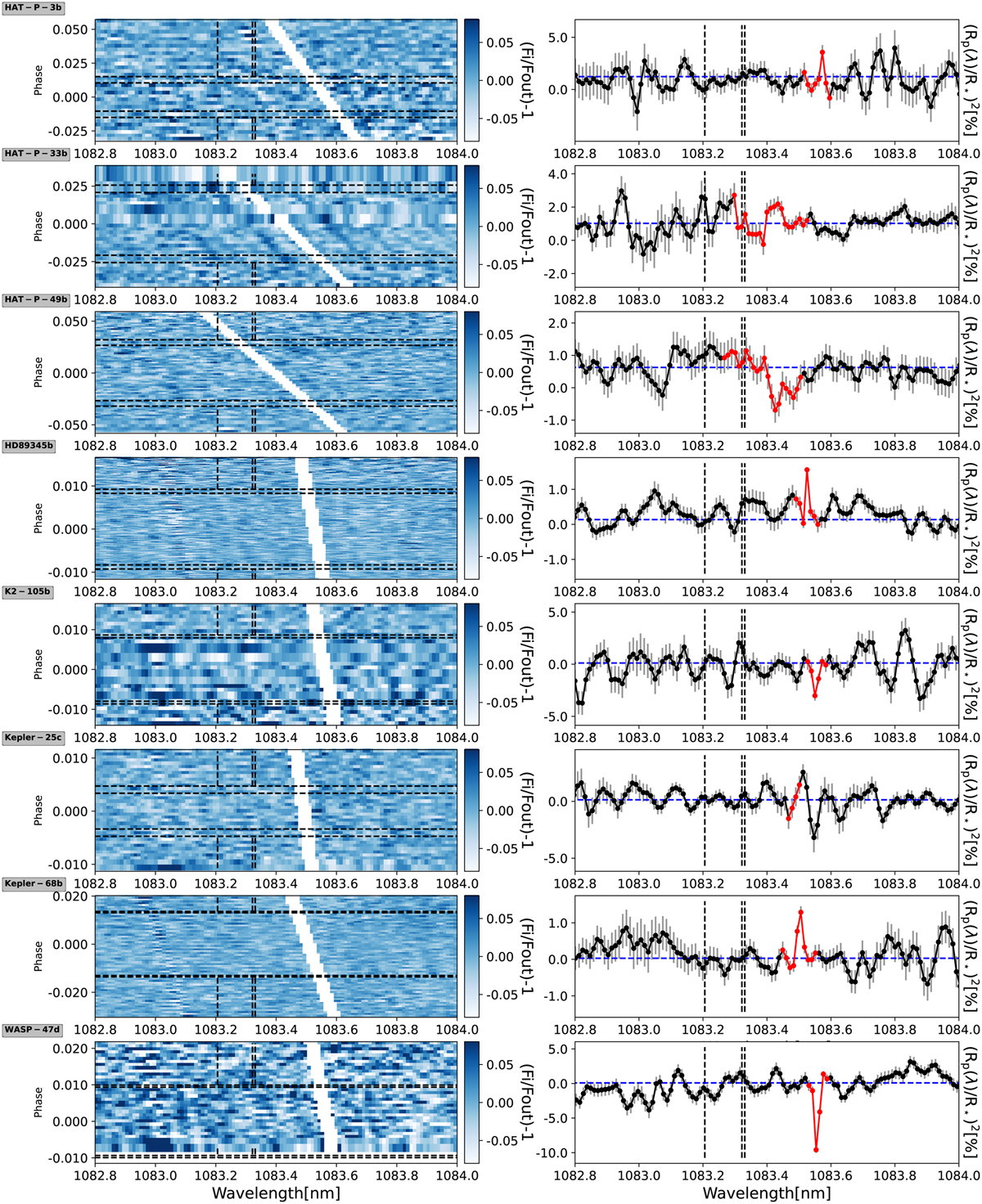Fig. 4

Download original image
Transmission spectra (![]() ) shown in tomography in the planetary rest frame in the region of the He I triplet, as a function of wavelength and planetary orbital phase (left). The contact points t1, t2, t3, and t4 are marked with horizontal black lines. The regions affected by OH− contamination are masked. Mean-transmission spectrum for each observed transit (right). The horizontal blue line is the white-light radius (Rpl/R⋆)2. The mean transmission spectra have an inverted sign compared to
) shown in tomography in the planetary rest frame in the region of the He I triplet, as a function of wavelength and planetary orbital phase (left). The contact points t1, t2, t3, and t4 are marked with horizontal black lines. The regions affected by OH− contamination are masked. Mean-transmission spectrum for each observed transit (right). The horizontal blue line is the white-light radius (Rpl/R⋆)2. The mean transmission spectra have an inverted sign compared to ![]() as the radius is expressed instead of absorption. Black vertical lines indicate the position of the He I lines. Red line marks the spectral regions affected by OH− emission. For some planets, some residuals are left at the position of the Si line (~1083 nm). This is due to the depth of the line which can give rise to difficulties in the spectral extraction (see e.g., Krishnamurthy et al. 2023).
as the radius is expressed instead of absorption. Black vertical lines indicate the position of the He I lines. Red line marks the spectral regions affected by OH− emission. For some planets, some residuals are left at the position of the Si line (~1083 nm). This is due to the depth of the line which can give rise to difficulties in the spectral extraction (see e.g., Krishnamurthy et al. 2023).
Current usage metrics show cumulative count of Article Views (full-text article views including HTML views, PDF and ePub downloads, according to the available data) and Abstracts Views on Vision4Press platform.
Data correspond to usage on the plateform after 2015. The current usage metrics is available 48-96 hours after online publication and is updated daily on week days.
Initial download of the metrics may take a while.


